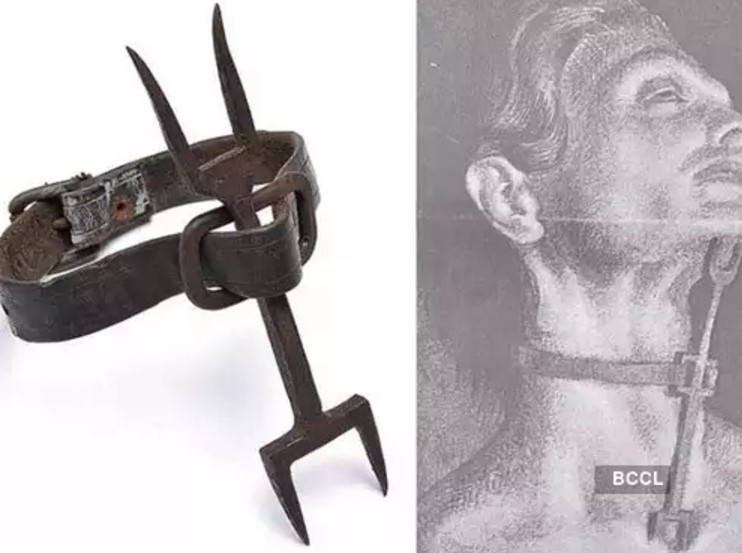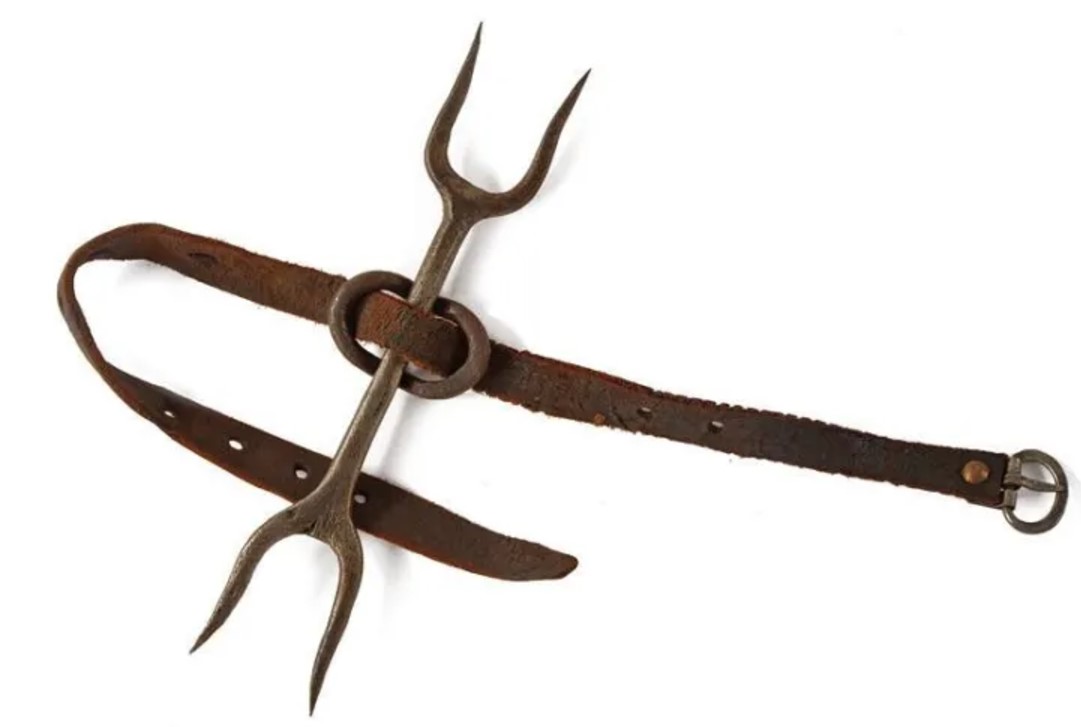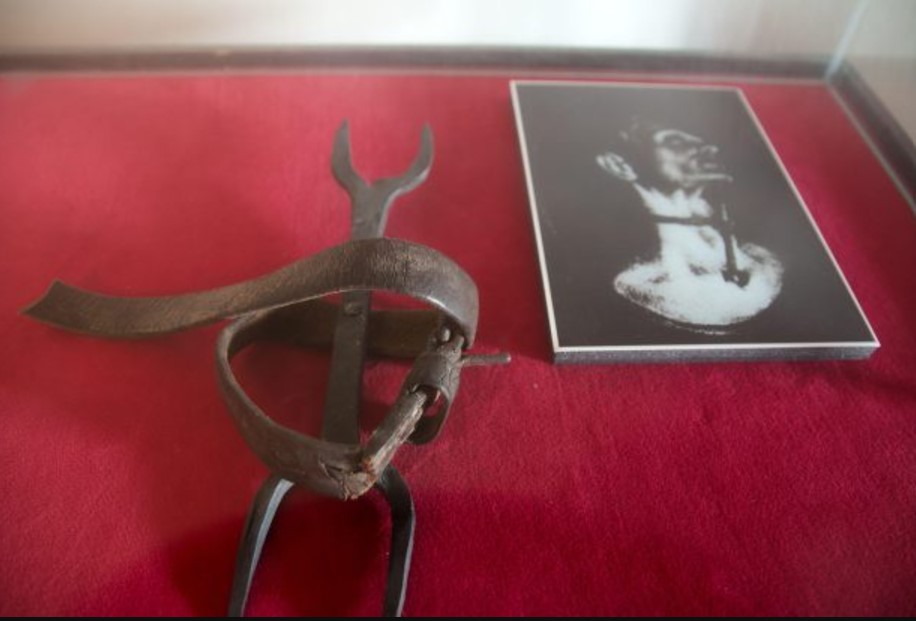The medieval era is infamous for its grim methods of punishment and control, particularly during the Inquisition. Among the many devices devised to instill fear and suppress dissent, the Heretic’s Fork stands out for its simplicity and psychological cruelty. This article on archeology.dulichvn.net delves into the history, design, and chilling legacy of this notorious torture tool.
What Is the Heretic’s Fork?
A Device of Fear and Control
The Heretic’s Fork was a small but effective tool used primarily during the Spanish Inquisition, a time when religious authorities sought to punish heretics—those accused of going against the doctrines of the Church. Unlike more complex torture devices, its minimalist design made it both portable and highly effective in achieving its goal: inducing fear and submission.

Simple Yet Brutal Design
The device consisted of a metal fork with two sharp prongs at each end, connected by a strap or collar made of leather or metal. One end of the fork was positioned under the victim’s chin, while the other was pressed against their chest or throat. This forced the accused to keep their heads upright and still, as any movement would cause the prongs to pierce their flesh.
Purpose and Use
The Heretic’s Fork was not intended to cause immediate death but rather to inflict prolonged discomfort and psychological torment. Victims were often left wearing the device for hours or days, unable to sleep or rest. Its purpose was twofold: to punish the accused and to serve as a warning to others who might consider defying the Church.
See more: The Twelve-Angled Stone in Cusco: A Testament to Ancient Ingenuity
The Historical Context of the Heretic’s Fork
The Role of the Inquisition
The Heretic’s Fork emerged during the Inquisition, a period marked by religious persecution and a relentless effort to root out heresy. The Church employed various methods to interrogate and punish those who were deemed a threat to its authority. Torture was a key part of this strategy, as it was believed to extract confessions and enforce conformity.

A Symbol of Intimidation
More than just a punishment tool, the Heretic’s Fork symbolized the power and reach of the Church. The fear of being subjected to such devices kept many people in line, discouraging dissent and fostering obedience.
Use Beyond the Church
While it is most closely associated with the Inquisition, the Heretic’s Fork was sometimes used by secular authorities as a means of controlling prisoners or punishing perceived enemies of the state.
How the Heretic’s Fork Was Used
Infliction of Pain and Discomfort
Once secured, the fork’s sharp prongs ensured that the victim remained upright. Any attempt to lower the head, nod off, or even speak could result in the prongs digging into the skin, causing intense pain.

Psychological Torture
The device’s true cruelty lay in its ability to create a constant state of fear and helplessness. The victim could not escape its grip, and the anticipation of pain from the slightest movement added to the mental anguish.
Prolonged Suffering
Victims were often left restrained with the Heretic’s Fork for extended periods, sometimes until they confessed or succumbed to exhaustion. The inability to rest or sleep compounded the torture, breaking the victim’s will over time.
See more: The Sleeping Lady: An Enigmatic Treasure of Prehistoric Malta
The Legacy of the Heretic’s Fork
A Window Into Medieval Justice
The use of the Heretic’s Fork reflects the brutality of medieval justice systems, where punishment was often harsh and public. Devices like this were designed not only to harm but also to serve as a deterrent by showcasing the consequences of defiance.

Cultural Representation
The Heretic’s Fork has since become a symbol of the dark side of religious and political power. It is often depicted in films, literature, and historical accounts as an emblem of medieval cruelty and the lengths to which authorities would go to maintain control.
Lessons From the Past
The Heretic’s Fork reminds us of the dangers of unchecked power and the use of fear to enforce conformity. It serves as a cautionary tale about the consequences of sacrificing individual rights and freedoms in the name of authority.
Conclusion: A Grim Reminder of the Past
The Heretic’s Fork stands as a stark reminder of the extremes to which societies have gone to enforce conformity and suppress dissent. Its simple yet devastating design exemplifies the cruelty of medieval punishment methods, particularly during the Inquisition.
By understanding devices like the Heretic’s Fork, we gain insight into a dark chapter of history and are reminded of the importance of justice, human rights, and the dangers of unchecked power. While the era of such torture devices has passed, their legacy continues to teach us valuable lessons about the need for compassion and fairness in the pursuit of truth and order.

CÁC TIN KHÁC
Mary Walton: The Forgotten Inventor Who Helped Clean Up America’s Cities
Tomb of Queen Nefertari in the Valley of the Queens, Egypt
Discover the Hypostyle Hall of the Temple of Hathor at Dendera
Venus de Losange: Unveiling the Mystery of a 20,000-Year-Old Paleolithic Icon